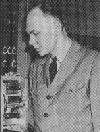Unix Tips & Tricks
![]()
$ ^C
$ stty sane^J
If this doesn’t work, try:
$ echo ^V^O
![]()
$ gdb -core core
[...]
Core was generated by `a.out'.
Program terminated with signal 6, Abort trap.
[...]
If you are on a system without gdb, try the file command:
$ file core
core: ELF 32-bit LSB core file of 'a.out' (signal 6)
$
![]()
map Q {!} fmt -c -u^M
Now, when you press ‘Q’ in visual mode, the current paragraph will be wrapped to approximately 70 characters.
![]()
$ cat bigcore.c
#include <fcntl.h>
#include <unistd.h>
int main(void) {
int fd = open("core", O_CREAT|O_WRONLY|O_TRUNC, 0600);
lseek(fd, 0x12345678, SEEK_SET);
write(fd, "1", 1);
close(fd);
return 0;
}
$ cc -o bigcore bigcore.c
$ ./bigcore
$ ls -l core
-rw------- 1 dmr staff 305419897 May 1 03:50 core
$ du -k core
48 core
$
![]()
![]()
$ tar cf - <dir> | (cd <destdir>; tar xf -)
This will create an exact copy of ‘dir’ in ‘destdir’. The same principle can be used to create a recursive copy on a remote machine:
$ tar cf - <dir> | ssh remotehost "(cd <destdir>; tar xf -)"
![]()
$ ls -l /usr/local/foo/{*.conf,*.local,*.rc}
which is equivalent to:
$ ls -l /usr/local/foo/*.conf /usr/local/foo/*.local /usr/local/foo/*.rc
This syntax is supported by (at least) bash, ksh, csh and sh.
You can extend this idea to make renaming files in another directory, for example, a little easier:
$ mv -i /usr/local/foo/bar/baz/{stuff,stuff~}
![]()
$ >-i
or…
$ touch -- -i
If the ‘rm -rf *’ command is issued in that directory, the shell will expand the ‘-i’ early on and go into interactive mode, thus giving you a chance to say ‘Whoa, that was close!’, which always sounds better than ‘Oh fsck!’.
This tip works because the -i option to rm will override any previous -f.
Be forewarned that this tip only protects against ‘rm -fr *’, i.e., files and directories in the current directory.
To remove the -i file (or any other file beginning with ‘-‘):
$ rm ./-i
or…
$ rm -- -i
![]()
$ cd -
To use the last argument of the previous command line as an argument, use $_. For example:
$ ls -l /usr/home/dmr/somefile
$ vi $_
![]()
set -o emacs
alias __A='^P'
alias __D='^B'
alias __B='^N'
alias __C='^F'
alias __H='^A'
You need to enter the actual control characters ^P, ^B, etc.




